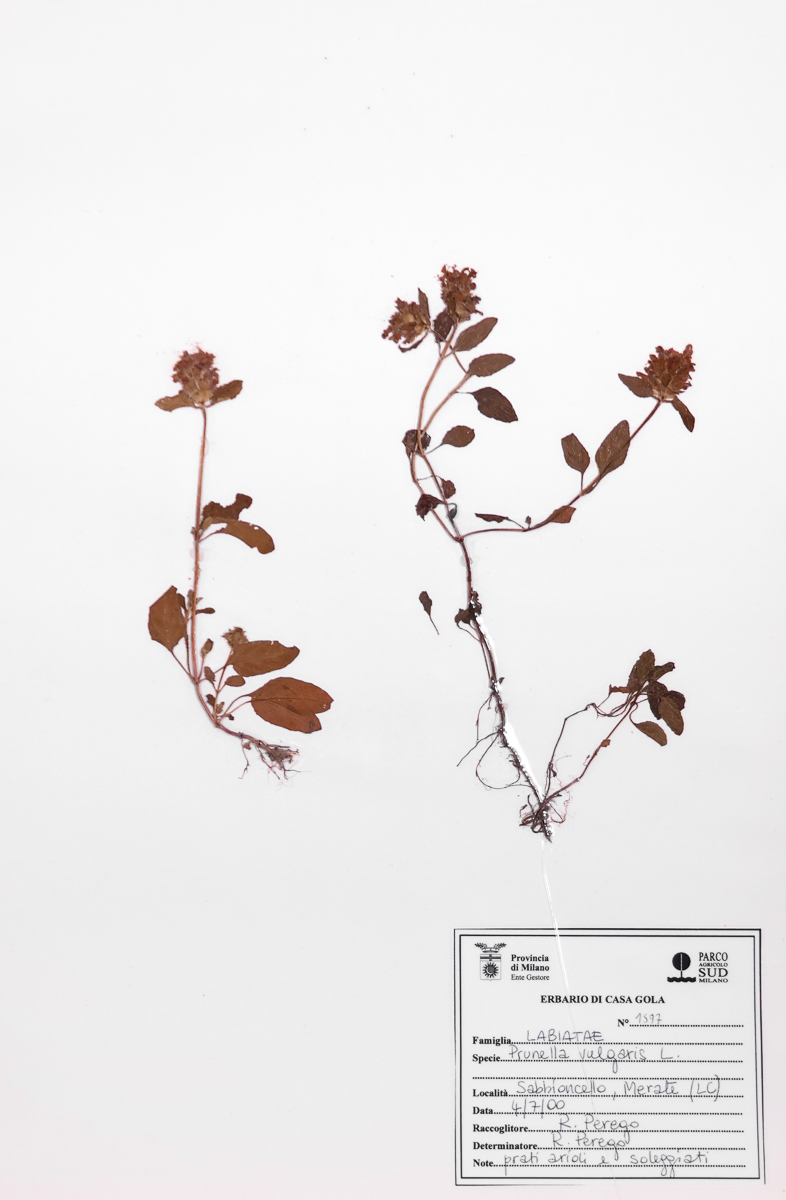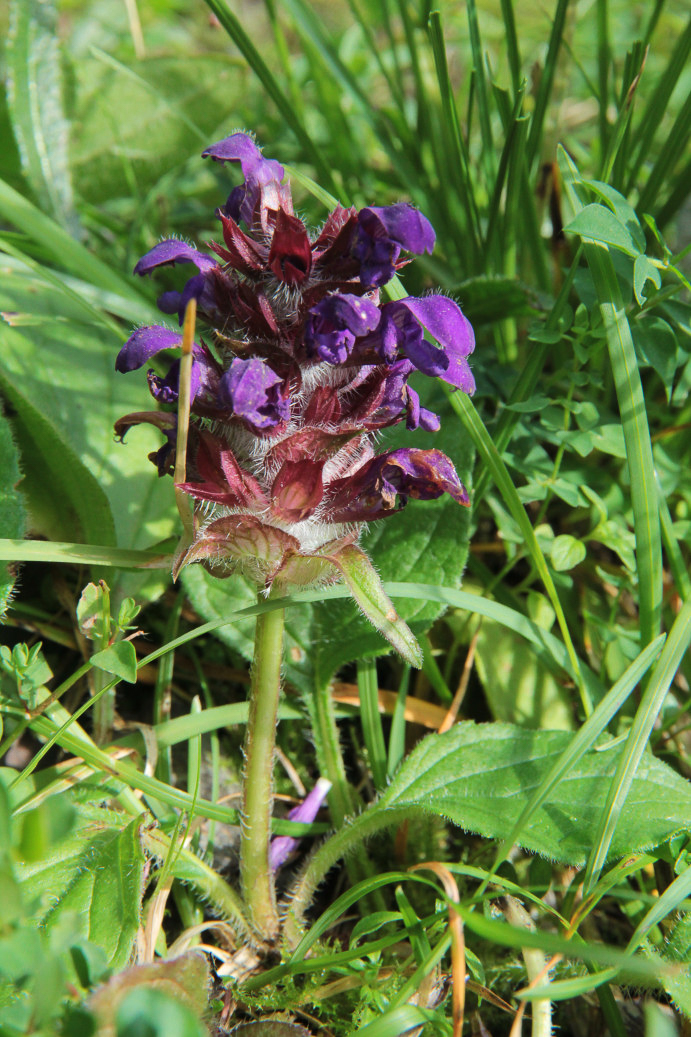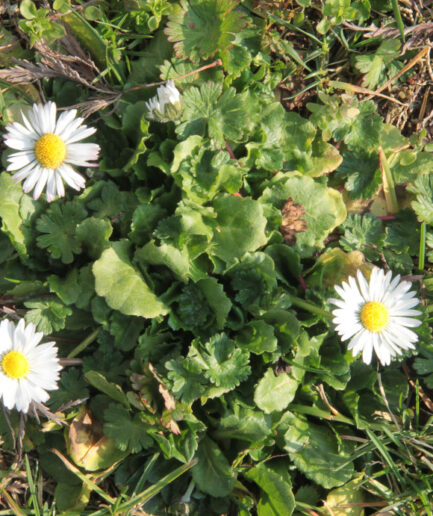Common Selfheal
Scientific Name: Prunella vulgaris L.
Family: Lamiaceae
MORPHOLOGY
Growth habit and size: A perennial herbaceous, creeping, rhizomatous plant, reaching a height of 20 cm.
Stem: The stems are often brownish or purplish, sparsely branched, and covered with sparse hairs.
Leaves: The leaves of the basal rosette are petiolate, arranged in 2-6 pairs, with lanceolate, entire, or irregularly crenulate blades. The upper leaves are sessile, opposite, lanceolate, and entire, with the outer pair located just below the inflorescence.
Flowers: The flowers have a blue-violet corolla, occasionally white, and are bilabiate, characterized by a high, arched upper lip. They are arranged in a compact spike, emerging from the axils of the two uppermost leaves. Bracts are kidney-shaped with long, pointed tips.
Fruits and seeds: The fruit is a tetrachene with 4 ellipsoid mericarps (nutlets) that are light brown with longitudinal nerves.
DISTRIBUTION AND HABITAT
It grows throughout Italy from sea level to 2,000 m. Common in meadows, pastures, and grassy areas.
USE
Prunella vulgaris is known for its antibacterial, antispasmodic, antipyretic, hypotensive, antiseptic, astringent, febrifuge, vermifuge, vulnerary, diuretic, stomachic, styptic, and tonic properties. Internally, it can be used for hemorrhages, heavy menstruation, headaches, high blood pressure, mastitis, and conjunctivitis. Externally, it can be applied to heal and treat small wounds, sores, burns, and bruises. As a mouthwash, it helps reduce inflammation and minor ulcers in the mouth caused by dietary disorders. According to a recent study presented by the American Society for Microbiology, a compound derived from its leaves can prevent and treat herpes simplex infection types 1 and 2. Its use in traditional medicine is ancient, first mentioned in Chinese medical literature during the Western Han Dynasty (206 BC-22 AD). Recent studies have demonstrated the activity of rosmarinic acid in reducing the release of free radicals at the biomembrane level of liver cells, thus preserving their structural and functional integrity. Before taking any plant-based product (medicinal or non-medicinal) for therapeutic or similar purposes, it is always advisable to consult a doctor.
The tender leaves can be consumed in salads. The plant contains tanning agents.
INTERESTING FACTS
It is a melliferous plant that gives hay a pleasant fragrance.
Photo: Kindly provided by Claudio Farinati





















